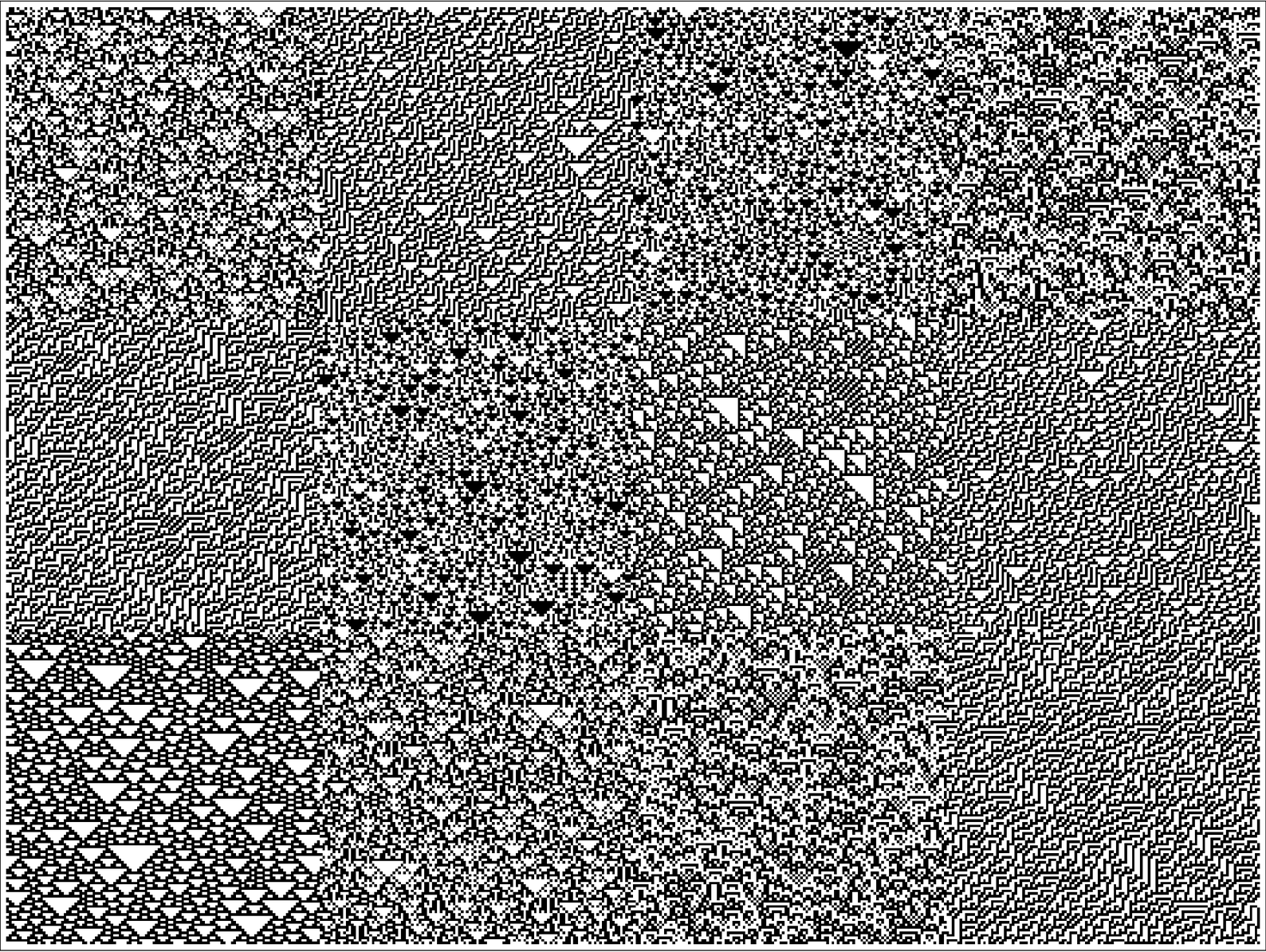So how does this work? The basic answer seems to be that there are nerve cells in our eyes and brains which are set up to respond to particular local patterns in the image formed on the retina of our eye.
The way this comes about appears to be surprisingly direct. Behind the 100 million or so light-sensitive cells on our retina are a sequence of layers of nerve cells, first in the eye and then in the brain. The connections between these cells are set up so that a given cell in the visual cortex will typically receive inputs only from cells in a fairly small area on our retina. Some of these inputs will be positive if the

Patches generated by a variety of one-dimensional cellular automaton rules. Each patch is set up to have a roughly equal number of black and white squares. But despite this, our visual system quickly notices that different patches have different textures. And presumably this is because the visual system is automatically identifying particular features in each patch. Everyone appears immediately to be able to see some patches when shown this picture. But after looking at the picture for a while, the boundaries between the patches seem to get somewhat clearer.